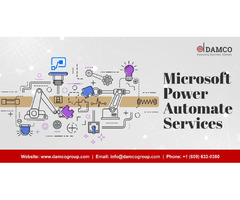In todays modern business landscape where assets play a pivotal role in organizational success, effective management of these assets has become a critical factor. This is where Enterprise Asset Management (EAM) steps in, revolutionizing the way businesses oversee, maintain, and utilize their valuable resources.
At its core, Enterprise Asset Management refers to the systematic approach of managing an organization's physical assets throughout their lifecycle. These assets can encompass a wide range of resources, including machinery, equipment, facilities, vehicles, infrastructure, and even digital assets. EAM goes beyond mere inventory tracking; it involves strategic planning, maintenance, optimization, and decision-making to maximize the value and performance of assets. With this understanding firmly in mind, let us explore why EAM has become such an indispensable practice for businesses of all sizes and sectors.
The Importance of EAM
In today's highly competitive business environment, efficient asset management is essential for several reasons. These include:
Cost Efficiency
EAM helps organizations reduce operational costs by ensuring that assets are properly maintained, leading to fewer breakdowns, decreased downtime, and improved overall efficiency.
Optimized Resource Utilization
EAM enables organizations to better allocate resources by tracking asset usage patterns, which helps in making informed decisions about repairs, replacements, and upgrades.
Extended Asset Lifespan
Proper maintenance and timely repairs facilitated by EAM can extend the lifespan of assets, delaying the need for costly replacements and reducing capital expenditures.
Compliance and Risk Management
EAM assists in meeting regulatory requirements and industry standards, mitigating risks associated with non-compliance and asset failures.
Data-Driven Insights
EAM systems collect and analyze data, providing valuable insights that inform strategic planning, forecasting, and continuous improvement initiatives.
Key Components of EAM
A modern EAM system comprises of various different solutions working in tandem to effect enterprise-wide change, which bring a host of benefits to companies. These include, but are not limited to:
Asset Tracking and Inventory Management
Accurate and real-time tracking of assets is fundamental to EAM, ensuring that their location, condition, and usage history are readily available.
Maintenance Planning and Scheduling
EAM systems facilitate maintenance planning through the use of specialized asset maintenance management systems, which create schedules for preventive, predictive, and corrective maintenance tasks.
Condition Monitoring and Predictive Maintenance
Preventive maintenance software, sensors and data analytics enable organizations to monitor asset conditions in real time, predicting maintenance needs and preventing unexpected failures.
Work Order Management
EAM software streamlines work order creation, assignment, and tracking, enhancing communication and collaboration among maintenance teams.
Asset Performance Analytics
Data-driven insights from EAM systems allow organizations to measure asset performance, identify inefficiencies, and make informed decisions for optimization.
Implementing EAM Successfully Key Steps
Now that we are aware of the benefits that EAM integrations can bring to businesses, it is also important to delve into HOW a successful implementation can be done. This requires careful planning and execution, and includes a few key steps that should always be kept in mind:
Defining Objectives
Clearly outline your organization's goals for EAM, whether they involve cost reduction, improved asset utilization, or compliance.
Choosing the Right EAM Software
Select an EAM solution that aligns with your business needs, considering factors such as scalability, integration capabilities, and user-friendliness.
Data Migration and Integration
Ensure a smooth transition by migrating existing asset data and integrating the EAM system with other relevant software, such as ERP or CMMS.
Training and Change Management
Train employees on using the EAM system effectively and address any concerns or resistance to change.
Continuous Improvement
Regularly review and update your EAM strategy, incorporating feedback and leveraging data insights to drive ongoing improvement.
Conclusion
Enterprise Asset Management has evolved from being a niche practice to a strategic imperative for organizations seeking to optimize their asset utilization, reduce costs, and enhance operational efficiency. By implementing a comprehensive EAM strategy, businesses can ensure that their assets operate at peak performance throughout their lifecycle. And the best way to implement these strategies is to choose a service provider that will give your organization the asset management solutions that they need to bring about change.
With TMA Systems, your business gets a leading technology partner that is dedicated to delivering reliable, innovative, and trusted Computerized Maintenance Management Systems (CMMS). With our specialized asset management solutions, you can expect a comprehensive, world-class enterprise asset management solution at your disposal to maximize OEE, ROI, and asset life span.
To find out more about how a partnership with TMA Systems can take your EAM to the next level, click here for more information.


 Loading
Loading






